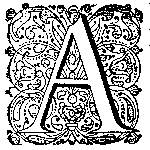A Spectral Spectacle
Dutch Mannerist Portals at Amsterdam’s New Philanthropic Sites, 1581-1645
DOI:
https://doi.org/10.51750/emlc11337Keywords:
public art, Classical architecture, portals, urban spectacle, poor relief, discplinary powerAbstract
After Amsterdam’s late medieval Catholic monasteries were surrendered to the Protestant government in 1578, four of these properties were converted into an orphanage, a mental asylum, and two gender-specific reformatories respectively before the turn of the century. Portals with Dutch Mannerist expressions were installed at the principal entrances as a publicly visible feature of modernisation for the repurposed complexes. This essay is a study of these architectural objects and their socio-political value for the city’s philanthropic campaign that affirmed middle-class power. It argues that the portals, completed with nar-rative relief panels and didactic inscriptions, were a means for Amsterdam’s authorities to redefine the spectacle of social marginality. Underclass visibility to the general population, once a concrete sight of panhandlers and vagrants occupying the urban landscape, became an abstract image of civic discipline. Such an image enabled sequestered and disappeared lives to reappear, with a spectral quality integral to Foucault’s analysis of modern society’s compulsion to stow away indigent bodies. Considering the seventeenth-century Dutch moral geography of moderating wealth through philanthropy, such a ‘spectral spectacle’ paralleled the Baroque theatricality of Counter-Reformation Rome as a spatial experience that advanced a more secular mode of devotion to the community.
Downloads

Published
Issue
Section
License
Copyright (c) 2021 Sim Hinman Wan

This work is licensed under a Creative Commons Attribution-NonCommercial 4.0 International License.





